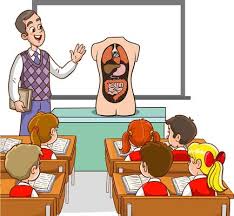The modern classroom has evolved significantly from the rigid structures of previous generations. Today’s teacher faces unique challenges in capturing and maintaining student attention in a world filled with digital distractions. Increasingly, educators are discovering that kids animated shows offer unexpected advantages in overcoming these challenges, providing pedagogical tools that align perfectly with how young brains process and retain information.
Neuroscience research reveals fascinating insights into why animation proves so effective as an educational medium. When children watch animated content, their brains typically show increased activity in both the visual processing centers and language comprehension areas simultaneously. This dual activation creates stronger neural pathways that enhance information retention and recall compared to single-mode learning experiences such as reading text or listening to lectures alone.
The psychological appeal of animated characters creates another significant educational advantage. Children naturally form parasocial relationships with recurring characters they encounter in media, developing emotional connections that make them more receptive to messages delivered through these familiar figures. This emotional engagement activates the brain’s limbic system, which plays a crucial role in converting short-term learning into long-term memory storage.
Color psychology also plays an important role in animation’s educational effectiveness. Studies show that the vibrant, contrasting colors commonly used in children’s animation stimulate visual attention centers in the developing brain. When educational concepts are color-coded within these animations, children demonstrate improved categorization abilities and concept differentiation, skills that transfer to other learning contexts.
The pacing of animated educational content provides another cognitive advantage. Well-designed educational animations typically present information in carefully timed segments that align with young viewers’ attention spans. This chunking of information prevents cognitive overload while allowing sufficient processing time—a balance that experienced teachers recognize as challenging to achieve with traditional instruction methods alone.
Music and sound effects in animated educational programs contribute significantly to their effectiveness. The temporal lobes process these audio elements alongside visual information, creating multi-sensory learning experiences that accommodate diverse learning preferences. Research consistently shows that information paired with memorable musical cues improves recall rates by approximately 40% compared to visual-only presentations.
Progressive educators have developed systematic approaches for maximizing animation’s educational benefits. This typically begins with pre-screening content for alignment with specific learning objectives and age-appropriate presentation. Teachers then develop viewing guides that direct student attention to key concepts, followed by structured activities that require application of the concepts presented in the animated content.
The accessibility benefits of educational animation deserve particular attention. Students with learning differences often find animated content more accessible than traditional instructional methods. The combination of visual storytelling, spoken dialogue, music, and on-screen text creates multiple entry points to the same information, allowing students to engage through their strongest learning modalities while developing their emerging skills.
International education researchers have documented animation’s effectiveness across cultural and linguistic boundaries. Visual storytelling often transcends language limitations, making educational animations valuable tools in multilingual classrooms or English-language learning contexts. This universal accessibility has contributed to the development of animation-based educational initiatives in diverse global settings.
The creativity inspired by animated educational content extends beyond passive viewing experiences. Many teachers report that students demonstrate increased creative output after engaging with educational animations, particularly when classroom activities involve creating their own animated stories to demonstrate concept mastery. This production-oriented approach transforms students from media consumers to content creators, deepening their engagement with the learning process.
Measurement of learning outcomes consistently supports animation’s educational value. Controlled studies comparing traditional instruction against animation-enhanced teaching typically show statistically significant improvements in both short-term concept acquisition and long-term retention. These benefits appear most pronounced for abstract concepts that benefit from visual representation and for students who struggle with text-based learning approaches.
The future of education will likely see further integration of animated content as production tools become more accessible to teachers themselves. Teacher-created animations tailored to specific classroom needs represent an emerging trend, with user-friendly animation platforms enabling educators to develop custom content addressing the particular needs of their student population.

